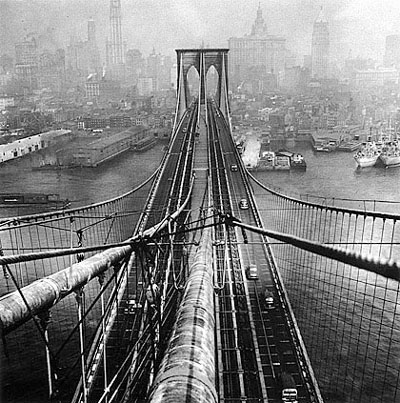
A different vision of what photography could be
In 1955, Edward Steichen opened what was then a radical exhibition at the Museum of Modern Art in New York.
It was entitled “The Family of Man“, and it encompassed photographs from 273 photographers from 60 countries around the world.
What made The Family of Man so important an exhibition was that it represented a transition for photography, from a craft to an artform in its own right.
Prior to Steichen, photography, and photojournalism in particular, had been seen as a technical exercise that captured images for newspapers or magazines, but it was industrial. A process. Not a Fine Art.
For most of the history of photography, it had indeed been a highly technical and complicated exercise involving chemistry, light and luck. It was expensive and very complicated. The gear was big and heavy and often required transporting a wagonload of chemicals into the field for processing.
In the 1930s, two revolutions in technology from Germany changed the nature of photography. The Leica company invented a small, light weight and relatively inexpensive camera that could easily be transported into the field. At the same time, Agfa developed film on rolls of plastic. Suddenly big view cameras and sheet film were replaced by a technology that was simple, fast, easy to use and eminently portable.
A new generation of photographers embraced this new technology and took photojournalism from being a craft to being an art form. Powerful. Intimate. Real. Immediate.
Steichen’s 1955 entry into the vaunted Museum of Modern Art marked the official recognition of a transformation that had been in the works for twenty years.
Today, I believe we can experience the same kind of transformation in video. As with still cameras, video cameras are today small, lightweight, inexpensive and easy to use. As with the Leicas, they open the door to a new generation of videographers who can transform television reporting and journalism from a craft to a Fine Art as well.
We call it television, but we too often pay too little attention to the ‘vision’ part of this, preferring to simply focus our cameras on a reporter doing a stand up, or an exterior of a building and a police tape. But I think the opportunity now exists to transform video journalism as photo journalism was transformed two generations ago.
It is for this reason that I think the Prize is so important.
We want to attract the very best videographers in the world who can demonstrate the pure passion and power of the medium.
Today, many museums and homes (my own included) display works of photojournalism on their walls as art. (My own collection includes Sebastao Salgado, my personal favorite). I can easily envision a world in which 20 years from now perhaps, museums and homes will proudly display flat screen panels that continously roll short videojournalism pieces that are regarded as fine art as well.

I’m Kind of overwhelmed!!!!
I’m thinking what I love and like for and of ART.
Infinite definition.
From amish quilts hanging in museums, to
American muscle cars of the sixties etc being
prized more then traditional objects of paintings, statutes etc.
Because videojournalism can shows images of all those and sound, does that make video a further abstraction of art ?
Just as Photojournalism was to painting?
This might be going contrary to current thought, but with this medium,VIDEO might not need the services of a curator.
Just the outlets/computers of the public .
I know what I like and what I don’t.
Maybe what
will be showing in the future on everybody’s flat screen is what they consider ART.
But Only THEM.
But that might change the next day or when their moods change. Or what is considered ART by their peers, as noted by their “HITS ” of the popular web video sites!
I”m still overwhelmed!!